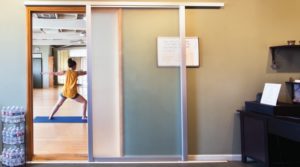If your wisdom teeth are causing you pain, dentists recommend having them removed before they become more painful.
Ignoring wisdom tooth pain can lead to an infection, as bacteria make their way inside the open tissue. This can affect the health of your body generally. If your wisdom teeth are impacted, cysts may develop in which packets of fluid surround the affected teeth, causing permanent damage to your jaw and other teeth. Occasionally, tumours can even occur.

Types of anaesthesia for wisdom teeth removal
There are three types of anaesthesia that may be used in wisdom teeth surgery:
- Local: The area around the affected teeth will be numbed with an injection. You will feel pressure, but no pain.
- Sedation: You will be made to feel calm by drugs delivered intravenously. Local anaesthesia will also be used to numb your mouth. You won’t feel any pain and your memory of the surgery will be limited.
- General: You will receive drugs intravenously or through a breathing mask. You will sleep through the procedure and feel no pain. This form of anaesthetic has the longest recovery time.
What happens during surgery?
If your wisdom teeth do need to be removed, an oral surgeon can do this in their office. The procedure takes less than two hours.
To extract your wisdom teeth, your oral surgeon will:
- cut the gum to reveal the tooth and bone
- clear away any bone that blocks access to each tooth
- remove the affected tooth. Often the tooth will be cut into pieces first to make this easier
- clean the area of fragments of tooth and bone
- stitch the wound closed, if necessary. Your stitches will dissolve within a few weeks and do not need to be removed
- pack gauze around the wound, to help it heal
Recovering from wisdom tooth removal
Your recovery time depends on the type of anaesthetic you receive. If you have had sedation or a general anaesthetic, you’ll recover in a quiet room at the dental surgery. If you have had a local anaesthetic you can recover in the dental chair.
After surgery
You may feel discomfort for three to four days after having your wisdom teeth removed. Within a few weeks your mouth will be completely healed.
It is important to follow your dentist’s instructions after wisdom teeth removal. Here are the basics:
- bleeding: Your wound may ooze blood for the first day after surgery. Try not to spit too much, as this blood is forming clots that help to heal the wound. Your dentist will tell you how to care for the wound by replacing the gauze regularly.
- pain: You may need to take an over the counter pain medication to assist you with pain after surgery, or you may be given prescription medication.
- swelling and bruising: Your cheeks may be swollen for a few days, and bruising could last even longer. Ice packs are useful in reducing pain and swelling.
- rest: It is important to rest after your surgery, and to avoid heavy physical activity for at least a week afterwards. Try to avoid doing anything that might dislodge the blood clot from the wound, as it will form to help you heal.
- fluids: Drink plenty of water, and avoid alcohol, caffeine, fizzy and hot drinks for at least 24 hours after surgery. Don’t drink through a straw, as this may dislodge the blood clot from your wound.
- food: Eat only soft foods for the first 24 hours, and avoid anything that might irritate the wound, such as spicy foods, or food that might get stuck in the tooth socket.
- cleaning your teeth: Wait 24 hours before brushing your teeth, spitting or using mouthwash.
After this you can resume brushing gently and rinse your mouth with salt water after every meal for the next week.
- smoking: Avoid smoking for at least 72 hours after surgery, and avoid chewing tobacco for at least a week. Any kind of tobacco can delay your healing and cause complications.
- Stitches: If you have stitches, these will usually dissolve within a few weeks. Your dentist will let you know if you will need to have your stitches professionally removed.
When should I call my dentist?
Most people recover from wisdom tooth removal without complications. It is important to call your dentist if you experience any of the following:
- trouble breathing or swallowing
- heavy bleeding
- fever
- pain that is not relieved by medication
- swelling that grows worse two or three days after surgery
- a bad taste in your mouth that doesn’t improve after rinsing with sat water
- pus in or around the tooth socket
- ongoing numbness
- blood or pus in your nasal discharge
Source: http://wisdomtoothpain.org

 There is a new rising trend in the custom building world that is stemming from the Baby Boomer generation. Many people from this era are approaching their retirement age and with this comes a new sense of freedom and time. We are noticing that many Baby Boomers are choosing to use this time to build their final dream home. More specifically, they are building this home around the wheel chair they are not yet living in. This is creating some obstacles when it comes to the design of their homes.
There is a new rising trend in the custom building world that is stemming from the Baby Boomer generation. Many people from this era are approaching their retirement age and with this comes a new sense of freedom and time. We are noticing that many Baby Boomers are choosing to use this time to build their final dream home. More specifically, they are building this home around the wheel chair they are not yet living in. This is creating some obstacles when it comes to the design of their homes.